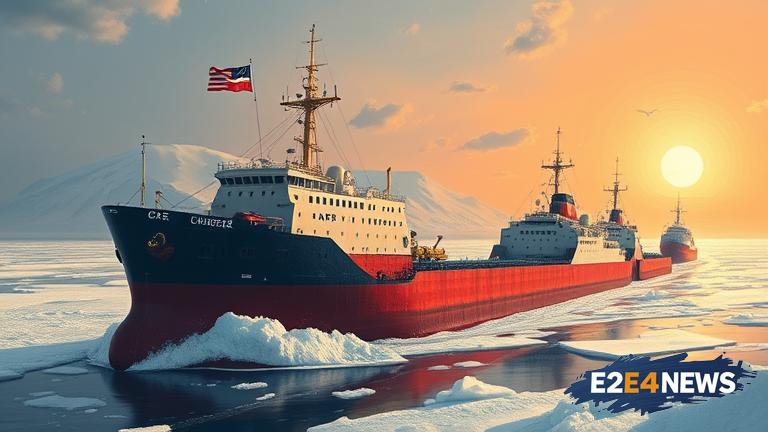The world is witnessing an unprecedented race for icebreakers, with global powers like the United States, China, and Russia investing heavily in this critical technology. The primary motivation behind this surge in investment is the rapidly melting Arctic ice, which is opening up new shipping routes and access to previously inaccessible natural resources. The Arctic region is believed to hold vast reserves of oil, gas, and minerals, making it an attractive destination for countries seeking to expand their economic influence. The United States, in particular, is keen on developing its icebreaker capabilities to counter the growing presence of China and Russia in the region. China has already made significant strides in this area, with its state-of-the-art icebreaker, the Xue Long 2, capable of breaking through ice up to 1.5 meters thick. Russia, on the other hand, has a long history of icebreaker development and currently operates the largest fleet of icebreakers in the world. The European Union is also joining the fray, with several member states investing in icebreaker technology to secure their interests in the Arctic. The icebreaker race is not just about economic interests; it also has significant geopolitical implications. The ability to operate in the Arctic region will give countries a strategic advantage in terms of trade, security, and influence. The United States, for example, is concerned about China’s growing presence in the Arctic and its potential to disrupt the regional balance of power. Russia, meanwhile, is seeking to maintain its dominance in the region and protect its economic interests. The icebreaker race is also driving innovation, with countries investing in new technologies like nuclear-powered icebreakers and advanced propulsion systems. Despite the many benefits of icebreakers, there are also concerns about their environmental impact, particularly in the fragile Arctic ecosystem. As the icebreaker race continues to intensify, it is likely that we will see significant advancements in technology and a growing presence of global powers in the Arctic region. The next few years will be crucial in determining the outcome of this race and the future of the Arctic region. The investments being made today will have far-reaching consequences, shaping the global balance of power and the future of international trade and commerce. In conclusion, the global icebreaker race is a complex and multifaceted issue, driven by a combination of economic, geopolitical, and technological factors. As the world continues to navigate this rapidly changing landscape, it is essential to consider the potential implications of the icebreaker race and the future of the Arctic region.
